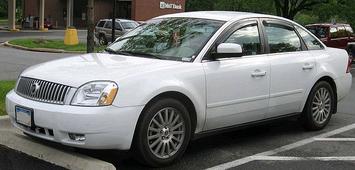
Americans are keeping their cars a lot longer than before --- an awful lot longer. The first Nationwide Transportation Survey, in 1977, indicated that the average age of household vehicles was 6.4 years, while the average pickup truck or van was 5.6 years (Figure 1).

Forty years later, in the recently released 2017 Nationwide Transportation and Housing Survey reports the average age of cars at 10.1 years, 58 percent longer than before. Pickups, vans and sport utility vehicles (not a separate category in 1977) had an average age of 10.4 years, up a substantially larger 86 percent (Figure 2).

The biggest drop was in the newest vehicles. In 2017, 13.2 percent of households vehicles were two years old or less. This is down more than one-half from the 1977 figure of 27.8 percent. The number of household vehicles 10 years old or more was nearing one-half, at 48.5 percent. This is more than three times the 15.6 percent share of such vehicles in 1977.
There are multiple reasons behind this aging of the vehicle fleet, though two may be most important.
Why People are Keeping Cars Longer: Improved Technology?
Some experts emphasize the role of improved technology.
Andy Jensen, writing at advanceautoparts.com reminds us of a time that the "love affair with the automobile" was as much a love affair with the auto mechanic.
"In the 1950s, families would hit the dealerships to see the new models and replace their worn-out 4-year-old cars. In the 1980s, Toyota commercials featured excited owners bragging about hitting 100,000 miles."
But something changed. As Jensen continues: "Today, vehicles routinely hit 200,000 miles." Jensen goes on to cite advances such as fuel injection, synthetic oil and high-tech assembly as principal reasons for the improvement.
Consumer Reports says that:
"Not long ago, to keep a car running beyond the 200,000-mile mark would have seemed about as likely as driving it to the moon. But big improvements in powertrain technology, rust prevention, lubricants, and more have led to game-changing improvements in reliability and durability. Now, almost any car can make it well into six-figure territory with proper care."
Why People are Keeping Cars Longer: the Competitive Market?
The operation of the competitive market was also an important contributor. Mary H. Cooper, of CQ Research reports that as late as 1978, Detroit's big three manufacturers commanded 82 percent of the US domestic automobile market, while Japanese manufacturers had only 12 percent of the market. Cooper, writing in 1992 says:
"By 1982, the Japanese were selling nearly 2 million cars in the United States and had strengthened their market share to 23 percent, more than four times that of the European automakers; the U.S. share, meanwhile, had dropped below 75 percent."
She continues:
"Initially, better fuel economy led American consumers to abandon their gas-guzzling American behemoths for the no-frills, energy- efficient “econoboxes” made by Toyota, Datsun, Honda and other Japanese companies. They soon discovered a hidden benefit: Japanese cars were generally more reliable and held their value longer than domestic cars."
Detroit responded by improving its reliability, though not soon or effectively enough to stop the Japanese from approaching a 40 percent market share by 2017. Curtis Hutchinson, at motortrader.com finds that the Japanese manufacturers retain a substantial reliability advantage. Quora's Matt Hudson describes the situation a bit more graphically:
"People these days tend to be ecstatic if certain Fiat Chrysler products make it home from the dealership, and disappointed if their Toyota’s cup holder cracks after 200k miles."
It’s critical to note that the majority of Japanese cars sold in the United States are built in the United States. This occurred in response to voluntary trade restraints agreed upon in the 1980s between Japan and the United States. Now there are Japanese vehicle assembly plants in Alabama, Indiana, Kentucky, Mississippi, Ohio, Tennessee and Texas.
At the same time, Eileen Falkenberg-Hull, writing in a U.S. News and World Report "Best Cars" feature considered South Korea's Hyundai a serious enough competitor to be compared to Japan's high quality Honda. While Honda won overall, Hyundai had the better reliability rating. This is a considerable achievement for a car that had to counter a less than favorable reliability two decades ago by offering a 100,000 mile, 10-year warranty. Hyundai has one US assembly plant.
At the same time, there are also reports that American cars are closing the reliability gap with those made in Japan.
Consumers: The Real Winners
There may be factors beyond technological advances and better reliability. Whatever the causes, the real winners are consumers. This includes the buyers of new cars, who can still trade them in every few years as their parents or grandparents did decades ago. A result is a higher-quality used car market, making late model used cars a better substitute for new cars. It also includes people whose incomes require the purchase of used cars, which are, of course, less expensive, not only to buy, but to maintain and keep operating.
Wendell Cox is principal of Demographia, an international public policy and demographics firm. He is a Senior Fellow of the Center for Opportunity Urbanism (US), Senior Fellow for Housing Affordability and Municipal Policy for the Frontier Centre for Public Policy (Canada), and a member of the Board of Advisors of the Center for Demographics and Policy at Chapman University (California). He is co-author of the "Demographia International Housing Affordability Survey" and author of "Demographia World Urban Areas" and "War on the Dream: How Anti-Sprawl Policy Threatens the Quality of Life." He was appointed by Mayor Tom Bradley to three terms on the Los Angeles County Transportation Commission, where he served with the leading city and county leadership as the only non-elected member. Speaker of the House of Representatives appointed him to the Amtrak Reform Council. He served as a visiting professor at the Conservatoire National des Arts et Metiers, a national university in Paris.
Photo credit: 2004-2006 Mercury Montego (slightly older than the average car in 2017. via Wikimedia, Public Domain.












